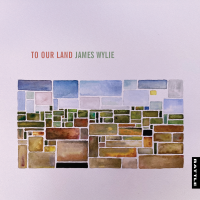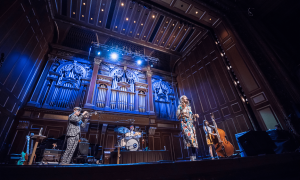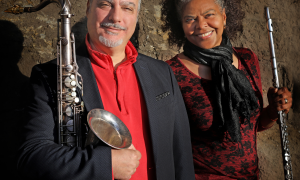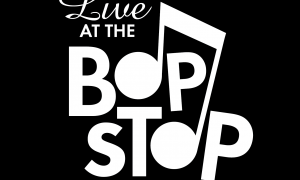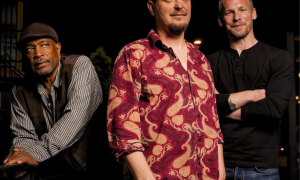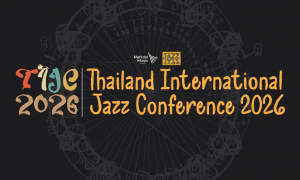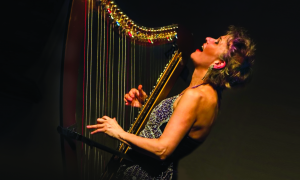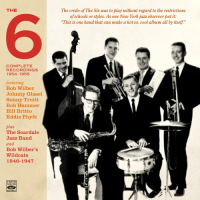
Not many jazz fans are familiar with the Six, a progressive jazz sextet in the mid-1950s with roots in Dixieland of the late 1940s. The migration from one style to another was an interesting one, with personnel changes and a shift in feel. What's especially enlightening is the line that runs from Dixieland to bop. Both share frantic, hot instrumentals coming and going as well as a passion for high energy and harmony. Now we can hear all of the group's recordings on The Six: Complete Recordings 1954-56, a newly released two-CD set from Fresh Sound.
The figures who were a constant in the Dixieland and bop groups were Johnny Glasel, a trumpeter, and saxophonist-clarinetist Bob Wilber. Glasel enrolled in the Yale School of Music in the 1950s, and played in the New Haven Symphony Orchestra and chamber music ensembles when performing with jazz musicians. In New York, he was a member of a post-war Glenn Miller tribute band led by drummer Ray McKinley. In the 1950s and '60s, he performed in pit orchestras on Broadway and at Radio City Music Hall, releasing two jazz albums as a leader—Jazz Session for ABC Paramount in 1956, with Creed Taylor producing, and The John Glasel Brasstet for Jazz Unlimited in 1959. Wilber's lengthy career covered a wide range of jazz styles, but he was most committed to pre-war jazz. [Photo above of Johnny Glasel]
The two Glasel-Wilber Dixieland bands were the Scarsdale Jazz Band (1946) and Bob Wiber's Wildcats (1947). The pair are featured on this set. While I'm not a huge fan of this single-mood music, it's fascinating to hear New Orleans-inspired music followed by the bebop of the 1950s. You're able to compare and contrast, giving your ear insights and an education in jazz's evolution. [Photo above of Bob Wilber]
The Six's first album was called The Six (1954), a 10-incher recorded for Norman Granz's Norgran label. The group featured Johnny Glasel (tp), Porky Cohen (tb), Bob Wilber (cl,ts), Tommy Goodman (p), Bob Peterson (b) and Eddie Phyfe (d).
The second album was also called The Six (1955) for a 12-inch album Creed Taylor produced while at Bethlehem. This time the band included Johnny Glasel (tp), Sonny Truitt (tb), Bob Wilber (cl,ts), Bob Hammer (p), Bill Britto (b) and Eddie Phyfe (d).
The Six's third and final album was The View From Jazzbo's Head (1956) for Creed Taylor at Bethlehem. Jazzbo was the on-air name of a hip, popular New York DJ who was close to the band. The personnel was the same as above.
This new two-album set is peppered with gems. First, the Six was a tight sextet, and many of the musicians were formally trained pros. Second, the originals were lyrical and wonderfully arranged. Tommy Goodman's Take Six features smoothly arranged counterpoint akin to fingers of your hand folding into each other. Bob Wilber's Porky's Blues spotlights Porky Cohen's trombone. Music to Sin By by Goodman showcases the horns, and Tasty by pianist Bob Hammer is spirited and bright. Bill Potts's composition and arrangement of Giggles is hair-raising. There's also a richly contrapuntal Over the Rainbow, a punchy Our Delight, a soaring Serenata and a pensive Old Folks with Wilbur soloing on tenor saxophone.
On all of the set's progressive-jazz tracks, you can hear the shadow of hot jazz from Chicago. The standout overall is Johnny Gansel's fleshy, rolling trumpet. But to be honest, each member of the various groups is sensational and rewarding to hear at each turn. Listen once to the tracks as group effort and then again to the individual players soloing. Lots to absorb.
I last wrote about Johnny Glasel in 2017 here. Glasel died in 2011.
The figures who were a constant in the Dixieland and bop groups were Johnny Glasel, a trumpeter, and saxophonist-clarinetist Bob Wilber. Glasel enrolled in the Yale School of Music in the 1950s, and played in the New Haven Symphony Orchestra and chamber music ensembles when performing with jazz musicians. In New York, he was a member of a post-war Glenn Miller tribute band led by drummer Ray McKinley. In the 1950s and '60s, he performed in pit orchestras on Broadway and at Radio City Music Hall, releasing two jazz albums as a leader—Jazz Session for ABC Paramount in 1956, with Creed Taylor producing, and The John Glasel Brasstet for Jazz Unlimited in 1959. Wilber's lengthy career covered a wide range of jazz styles, but he was most committed to pre-war jazz. [Photo above of Johnny Glasel]
The two Glasel-Wilber Dixieland bands were the Scarsdale Jazz Band (1946) and Bob Wiber's Wildcats (1947). The pair are featured on this set. While I'm not a huge fan of this single-mood music, it's fascinating to hear New Orleans-inspired music followed by the bebop of the 1950s. You're able to compare and contrast, giving your ear insights and an education in jazz's evolution. [Photo above of Bob Wilber]
The Six's first album was called The Six (1954), a 10-incher recorded for Norman Granz's Norgran label. The group featured Johnny Glasel (tp), Porky Cohen (tb), Bob Wilber (cl,ts), Tommy Goodman (p), Bob Peterson (b) and Eddie Phyfe (d).
The second album was also called The Six (1955) for a 12-inch album Creed Taylor produced while at Bethlehem. This time the band included Johnny Glasel (tp), Sonny Truitt (tb), Bob Wilber (cl,ts), Bob Hammer (p), Bill Britto (b) and Eddie Phyfe (d).
The Six's third and final album was The View From Jazzbo's Head (1956) for Creed Taylor at Bethlehem. Jazzbo was the on-air name of a hip, popular New York DJ who was close to the band. The personnel was the same as above.
This new two-album set is peppered with gems. First, the Six was a tight sextet, and many of the musicians were formally trained pros. Second, the originals were lyrical and wonderfully arranged. Tommy Goodman's Take Six features smoothly arranged counterpoint akin to fingers of your hand folding into each other. Bob Wilber's Porky's Blues spotlights Porky Cohen's trombone. Music to Sin By by Goodman showcases the horns, and Tasty by pianist Bob Hammer is spirited and bright. Bill Potts's composition and arrangement of Giggles is hair-raising. There's also a richly contrapuntal Over the Rainbow, a punchy Our Delight, a soaring Serenata and a pensive Old Folks with Wilbur soloing on tenor saxophone.
On all of the set's progressive-jazz tracks, you can hear the shadow of hot jazz from Chicago. The standout overall is Johnny Gansel's fleshy, rolling trumpet. But to be honest, each member of the various groups is sensational and rewarding to hear at each turn. Listen once to the tracks as group effort and then again to the individual players soloing. Lots to absorb.
I last wrote about Johnny Glasel in 2017 here. Glasel died in 2011.
This story appears courtesy of JazzWax by Marc Myers.
Copyright © 2026. All rights reserved.






